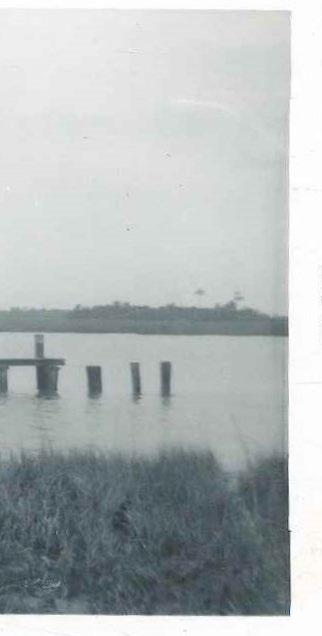
3 minute read
A LOOK INTO THE PAST Page Putnam Miller
A LOOK INTO THE PAST

FRIPP ISLAND IN 1962
This photograph provides a glimpse into Fripp Island in 1962. Just one year before, Jack Kilgore, a visionary young entrepreneur from Columbia, had finally sealed the deal to purchase the island and had started negotiations for the building of the bridge. Inspired by development on Hilton Head, he consulted with Charles Fraser who pioneered the concept at Sea Pines of accentuating the natural environment of a whole island with winding roads and culde-sacs and open spaces. Kilgore needed to sell lots to acquire the money for the development, but before lots could be sold, Kilgore had to create a master plan. Using arial photographs, he designed about a dozen subdivisions, many being semiprivate neighborhoods. Between every four to six ocean lots, he provided pathways to the ocean for all island property owners to have access to the beach.
Roy Krell, one of Kilgore’s early recruits for his leadership team, managed the sale of lots. He emphasized that money for the lots would be placed in in an escrow account and returned if the corporation had not signed a contract by December 1962 for the construction of the bridge. The first lots were sold as part of “package sales” that included one or more lots as well as shares in the corporation. The most expensive package was $7,852 for a beach front lot, a secondary beach lot, and 1,000 shares in the Fripp Island Resort. One of the least expensive packages was for an interior lot and 500

shares in the corporation for $2,752. In Jack Kilgore’s October 5, 1961 progress report, he announced the final approval for the construction of the bridge with plans for a construction contract to be signed on December 1, 1961.
With work on the bridge underway, the Fripp Island Resort negotiated in 1962 with the Gay Shrimp Company to ferry prospective buyers to the island. Advertisements in newspapers in Columbia and other nearby cities as well as bill boards on the major highway to Florida combined with an aggressive word of mouth campaign attracted perspective buyers. This 1962 photograph shows a shrimp boat docked at the site of the current marina. This is the same dock location that the lumbering company R. L. McLeod and Sons had used when they purchased Fripp Island in 1937. If you have ever wondered why there are no tall pine trees along the southern part of Tarpon, it is because they were cut down by the McLeod lumbering company. Fortunately for Fripp, lumber prices fell sharply in the late 30s. Before many more pines were cut, McLeod and Sons sold Fripp Island to a group of 16 Beaufortonians, the group from which Jack Kilgore purchased the island.
1962 also marked the year that Jack Kilgore formed the Fripp Island Country Club and signed a contract with George Cobb, one of the foremost golf course architects in the county, to design an 18hoe golf course. However, an obstacle in building roads and the golf course was the presence of a large population of wild hogs that made havoc with the earth moving projects. Hunters over the years who had enjoyed hunting deer on Fripp Island probably placed domestic pigs
on Fripp as a means of controlling the poisonous snakes. Roy Krell decided to use the wild hog problem as an occasion to invite area sportsmen and those who had an interest in investing in Fripp island to a wild hog hunt.
On November 30, 1962 Gay’s shrimp boats ferried almost a hundred men from Russ Point Landing on Hunting Island to the make shift dock at Fripp. Each hunter brought his own shotgun and lunch, and the Fripp Resort provided transportation. Jack Pittman, A Greenville businessman who had purchased a lot, attended the hog hunt. In a 2006 interview, he told me it was a most successful event and that over one hundred hogs were shot and given to the shrimpers who had transported them.
Page Putnam Miller, who for twenty years served as the lobbyist for the historical profession in Washington and for the past five years has been a Distinguished Visiting Lecturer in the graduate history program at the University of South Carolina, undertook several years of extensive research to examine the intricate turns and twists in ownership of the resort and to explore the evolution of the residential community.











